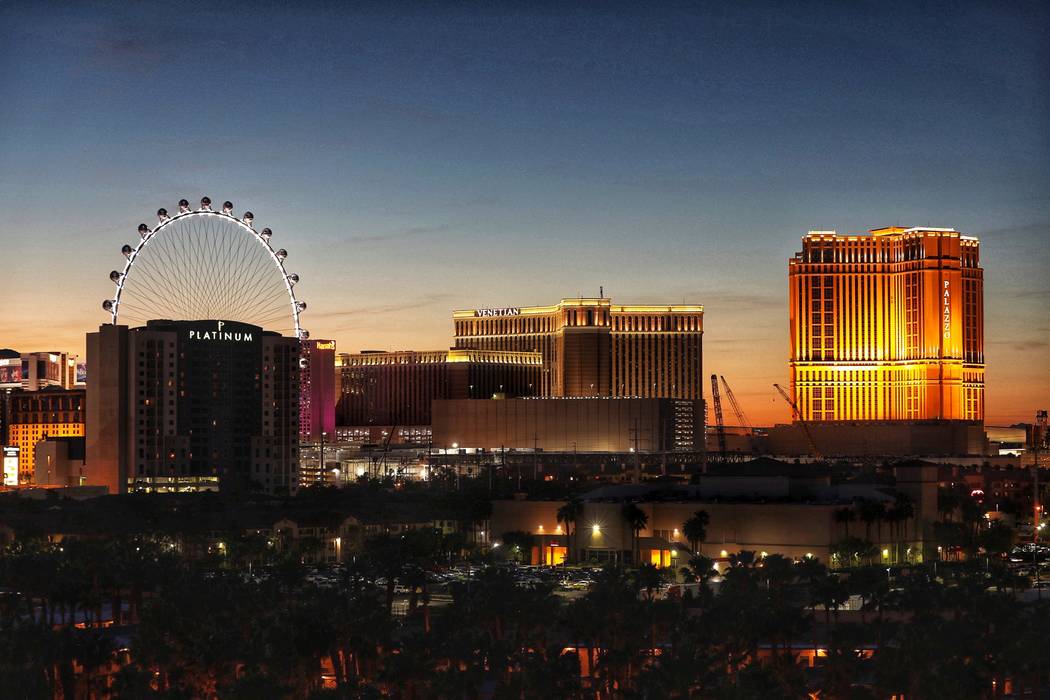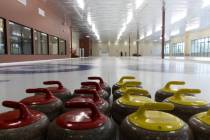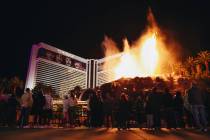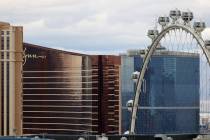Fees aren’t driving force behind Las Vegas Strip revenue decline
It didn’t take long for the haters to start chirping about resort and parking fees after the state Gaming Control Board published March gaming win numbers last week.
But as for the fees resulting in the decline in gaming revenue on the Strip, the evidence doesn’t support the hypothesis. Is there a direct correlation? Not so much. When the Gaming Control Board publishes monthly win numbers, I usually report the three-month trend leading up to the current month. That’s because data is collected differently every month and the three-month overview smooths out the volatile swings that can occur when comparing collections for the current month to a year ago.
For example, in some months, there are eight weekend days — the Friday and Saturday nights of any given month when leisure customers abound. But there may have been nine weekend nights in the same month a year earlier. Or 10. Naturally, eight days of revenue generation generally aren’t going to be bigger than 10. That’s why the three-month trends are important.
In March, the gaming win was flat in Clark County and Strip win was off 3.8 percent. The three-month trend paints a slightly different picture with Clark County down 1.2 percent and the Strip off 3.2 percent.
While most downtown resorts also charge for parking and have resort fees, downtown Las Vegas’ gaming win was up 3.1 percent over the three months of January, February and March.
The win in the so-called “locals market,” where there are resort fees but free parking, also was mostly up, with North Las Vegas at 5 percent. The Boulder Strip was flat, down 0.7 percent.
So what other variable has figured into the Strip’s decline in gaming win? It’s the game that many Strip resorts offer, but few other locations have — the incredibly volatile game of baccarat, a favorite among Asian high rollers and the game of choice in Chinese gaming enclave Macau.
In March, the Gaming Control Board reported the 319 baccarat tables at 22 locations won $51.3 million, a 56 percent decline from March 2018. Volume of play was down 42.1 percent to $484.3 million.
The win percentage was 10.9 percent, below the norms of 12-13 percent, indicating gamblers played lucky against the house.
In the three-month baccarat analysis, the decline from last year was still dismal, down 31.7 percent (despite an additional 18 tables in play), but the win percentage was a more typical 13.5 percent.
Expand that out for the entire year, from April 2018 to March 2019, and baccarat play is still a loser with a 13.2 percent decline with 332 tables in play and a win level of 12 percent.
Michael Lawton, senior market analyst for the Control Board’s Administration Division, said excluding baccarat, the state would have increased total win by 6.9 percent. Roulette win, in fact, was the second highest in history, up 43.5 percent to $41.7 million.
It seems the decline in baccarat play is the biggest factor in slumping Strip win, not fees or parking. Downtown Las Vegas and locals properties don’t offer baccarat.
High-rolling Asian baccarat players are more likely playing close to home, in Macau, Singapore or Australia instead of Las Vegas and parking and resort fees really don’t drive their decisions about where to play.
Debating parking and resort fee philosophies is important and they contribute to decisions by locals and even Californians to stay away or not come as often.
But we shouldn’t lose sight of the real reason Strip revenue is down. It’s baccarat.
Contact Richard N. Velotta at rvelotta@reviewjournal.com or 702-477-3893. Follow @RickVelotta on Twitter.


















